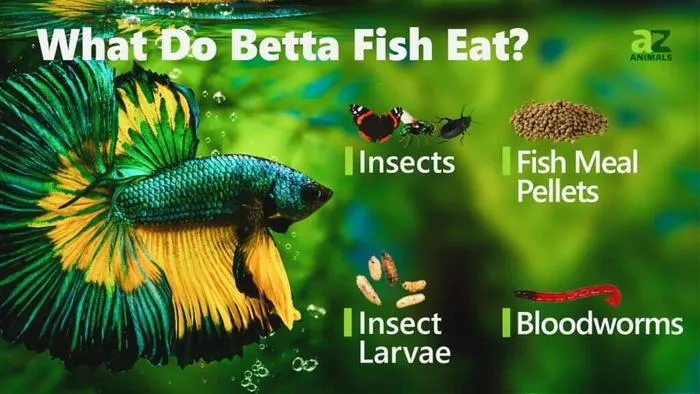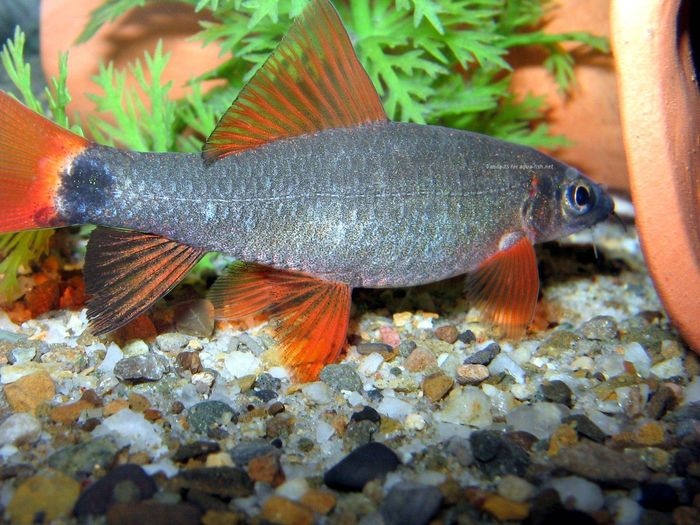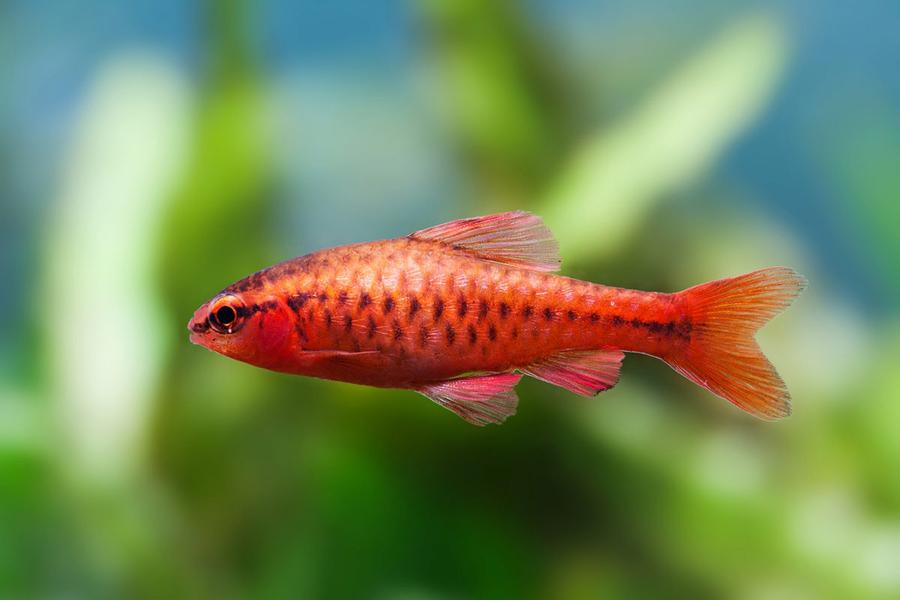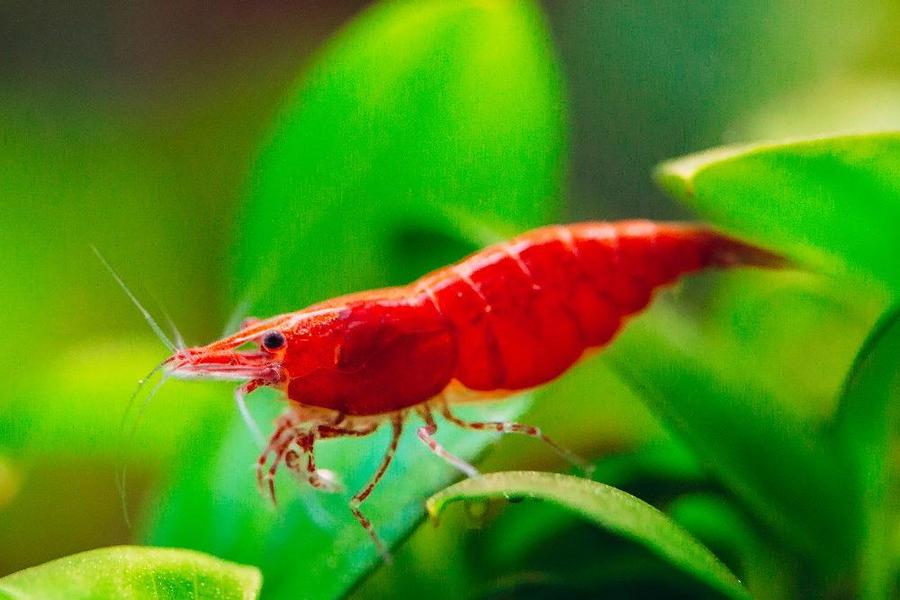African fish species have long amazed even the most sophisticated aquarists. The most famous is the Malawian cichlids, dazzling with all the colors of the rainbow. Calamoicht is also known, which is easy to mistake for a bizarre snake. But no less amazing is Pantodon or butterflyfish, which have become welcome guests in many aquariums.

Things You Want To Know About Butterfly Fish
Butterfly fish or butterflyfish (Latin Butterflyfish buchholzi, English African Butterfly Fish) is the only representative of the family of Freshwater butterflyfish or Moths (Latin Butterfly fish tidae), belonging to the order Aravaniformes (Latin Osteoglossiformes).
Inhabits fresh and stagnant water bodies of West and Central Africa. You can meet her in swamps, lakes, quiet backwaters of rivers with dense aquatic vegetation. It prefers to stay in the upper layers of water and is active at dusk.
The Pantodon or butterfly fish is genetically closest to the Arawans , which is noticeably reflected in the external similarity. It has a body strongly compressed from the sides and a snout that is lifted up. Its mouth is full of small and sharp teeth located on the jaws, palate, and vomer.
More About Pantodon or Butterfly Fish
The pectoral fins, thanks to which it got its name, are the most conspicuous part of this fish. They are large, wide and spread out perpendicularly, like a moth. The pelvic fins are located under the pectoral fins. They are lush and have 4 filamentary soft rays.
The dorsal fin is small and strongly displaced towards the caudal peduncle. But unlike the Arawan, the size of the butterfly fish is much more modest – 10-12 cm. The background color is light coffee, with chaotically scattered darker spots.
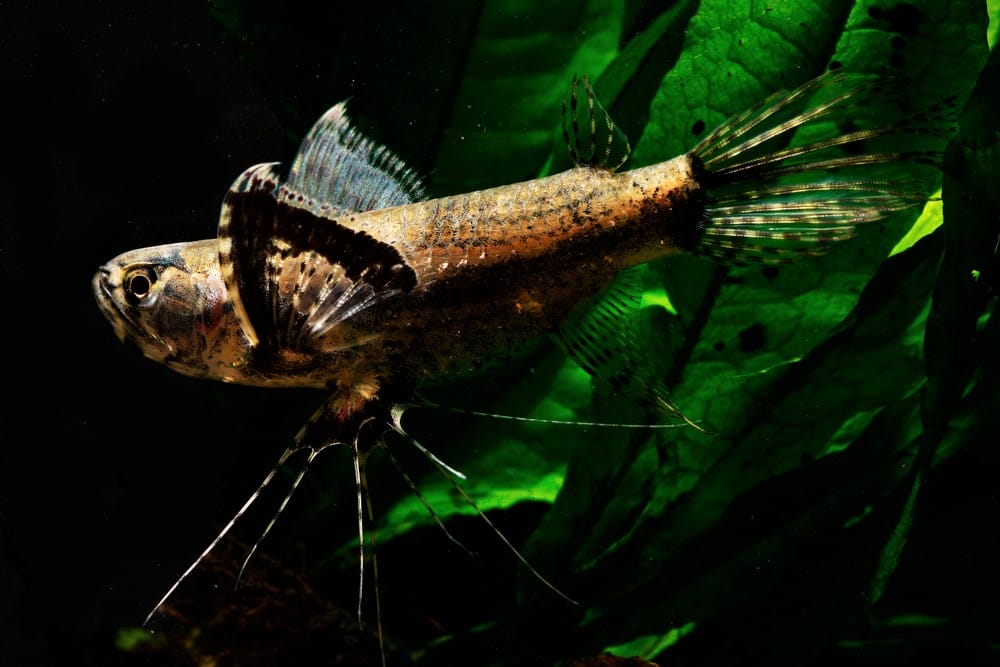
In nature, butterfly fish is an ideal insectivorous predator, capable of hovering for hours near the surface of the water, waiting for a potential prey. Its body shape allows it to jump out of the water at lightning speed for prey or, in case of danger, at distances of up to 2-3 meters, and large eyes vigilantly watch both the surface and the bottom.
In addition, the pectoral fins provide invaluable camouflage help – when viewed from above, the fish looks like a leaf that has fallen into the water.
Related : The Complete Guide to Peacock Gudgeon Care 2021
Aquarium Guide For Pantodon or Butterfly Fish
Butterfly fish is a popular object of aquarium fish farming. She cannot be called a pet for a beginner, since there are many nuances in caring for her. In order for this African beauty to please the owner with her graceful appearance, the following conditions should be created:
- Since Butterfly fish lives mainly in the upper layers of the water, it is necessary to provide him with a spacious aquarium with a large area of the water surface. Aquariums from 80 liters (90x30x30cm) are ideal. It is important to remember that its width is much more important than its depth.
- In nature, butterfly fish live in shaded areas. For this reason, use dim, diffuse lighting and floating vegetation.
- Keeping butterfly fish requires slightly brownish, soft, acidic water. To enrich it with tannins, use a backing of dried beech, oak and almond leaves. Any significant fluctuations in parameters should be avoided, since the inhabitant is very sensitive to them.
- The use of a peat filter is recommended to keep the water softness at an optimal level.
- The flow in the aquarium should be minimal.
- For its size, the Butterfly fish is an excellent jumper, so the aquarium should be equipped with a lid.
- The soft long rays of the pelvic fins can be mistaken for food by neighbors and nibbled. For this reason, it is best to keep butterfly fish with peaceful bottom fish.
- It is noticed that Butterfly fish feels much calmer on a dark substrate.
Water parameters:
- Temperature: 23-30 ° С (optimal – 25-28 ° С);
- Hardness: 2-15 ° dH;
- Acidity: 6.0-7.5 pH.
Feeding
The butterfly fish is an insectivorous predator. In nature, it feeds on small invertebrates, insects and their larvae. Small fish also does not shun.
In captivity, it perfectly eats dry flaky, live, and frozen food, pieces of earthworms, oysters, as well as small fish. The main thing is that the potential prey is at the surface since due to the structure of the jaw, the butterfly fish cannot pick up the food that has fallen to the bottom.
Some aquarists feed them live insects. Since caught flies can carry various diseases, including parasitic ones, their use as food is dangerous. One of the options for obtaining safe flies is as follows – you can buy maggots at a fishing store and put them in a warm place. After a few days, they will pupate and then turn into flies. They can be given to fish without fear.
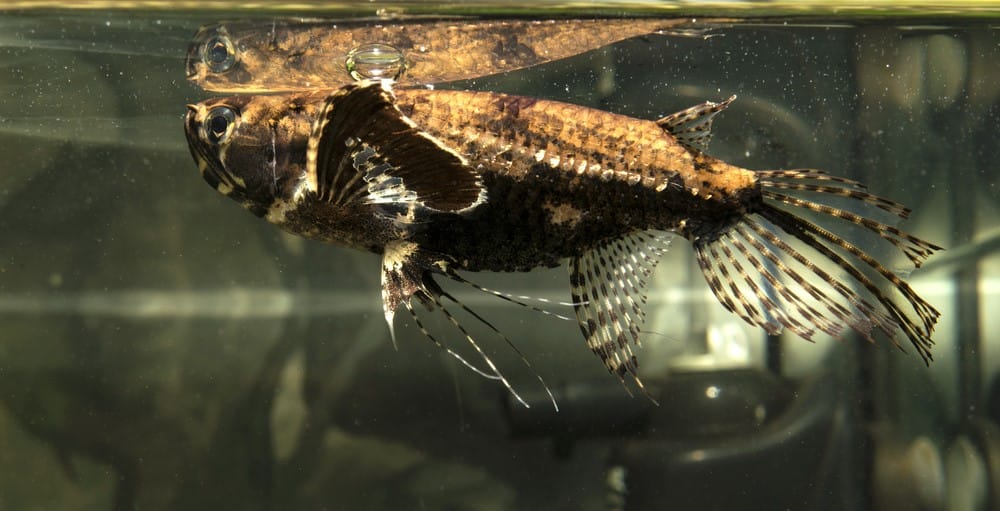
Breeding
Although it is difficult to breed butterfly fish in an aquarium, it is still possible. This will require providing growers with the most spacious aquarium, from 1.2 m in length and 0.4 m in width. The water in it should be soft and acidic (6.0-6.5 pH), and its temperature should be 25-26.5 ° C.
Sex is determined by the shape of the anal fin. In females it is straight, and in males it is curved.
A couple of weeks before spawning, producers are fed live and frozen high protein foods. Such a diet encourages them to reproduce and contributes to the formation of quality reproductive products.
In order to initiate spawning, it is necessary to gradually lower the water level over a couple of weeks. Then add 15-20 cm of fresh soft water.
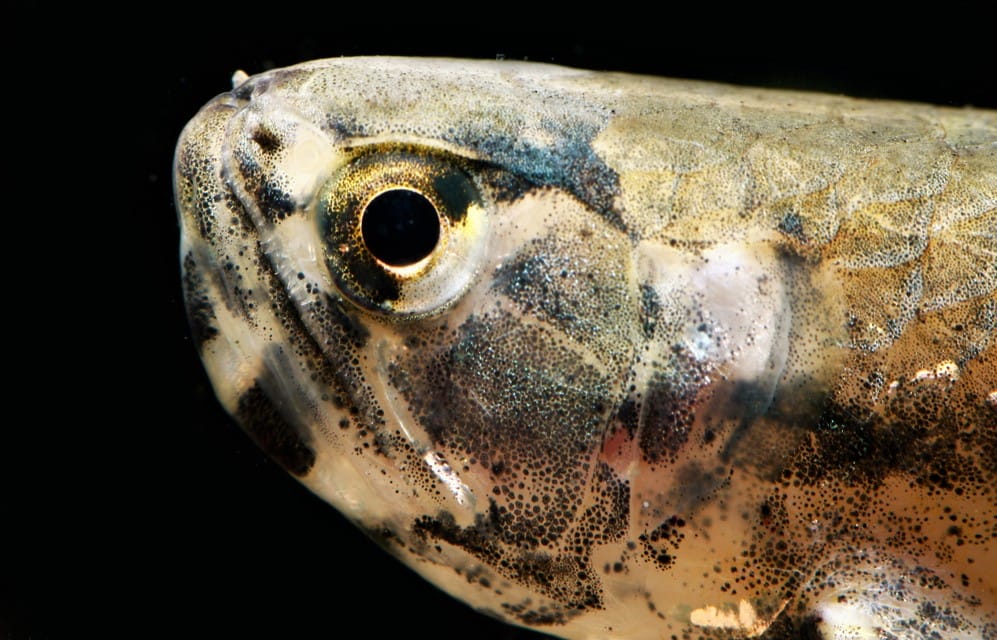
More About Butterfly Fish
In the evening and at night, the male begins to actively pursue the female, circling around her and mating 5-10 times. After that, the female must be transplanted. As it ripens, it spits out 80 to 200 already fertilized eggs onto the plants, which immediately float to the surface.
They are transparent at first but turn brown over a few hours. Butterflyfish are not inherent in caring for offspring, they can pose a danger to eggs. Therefore, the female must be fenced off in every possible way.
Egg incubation lasts 3-4 days, after which larvae hatch. Once their yolk sac has resolved, it is time to select a starter feed for them. This is where the most difficult task begins – to raise the fry. The fact is that small and mobile food is needed to feed them, for example, Artemia nauplii or Cyclops.
The very way of feeding the juveniles complicates the task – it does not look for food on its own, eating only what moves towards it.
Also, fry is very sensitive to water quality. Frequent small changes are required to prevent large fluctuations in parameters.
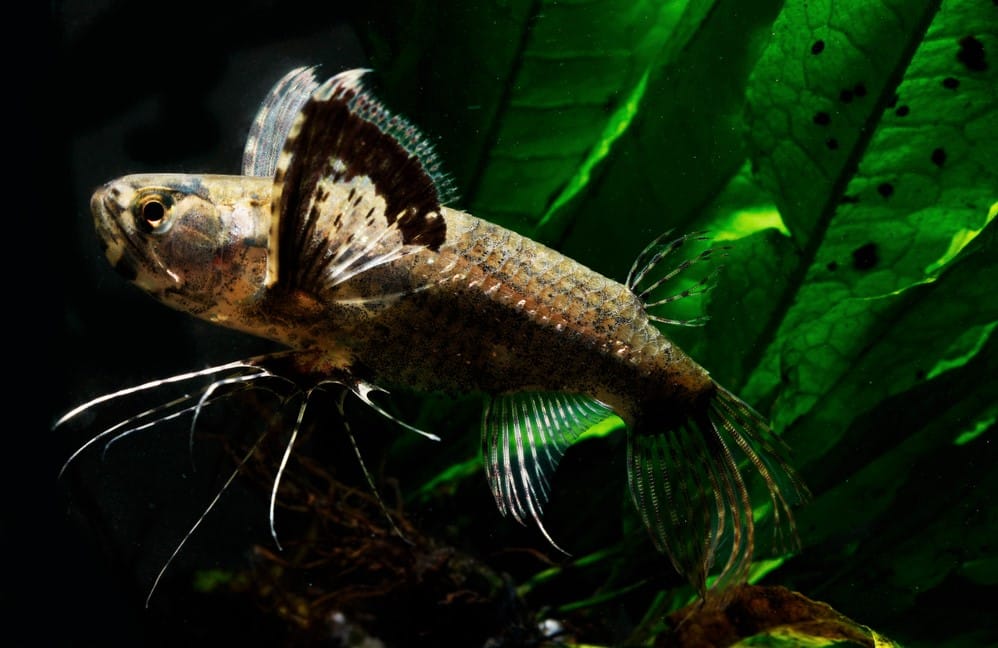
Compatibility
In general, although a butterfly fish is a predator, it can be called peaceful. As neighbors, other peace-loving fish that live in the water column and do not pluck its delicate pelvic fins are suitable for her.
- Good neighbors for her will be medium-sized haracin, who love soft water, for example, thornsia and tetra congo.
- In addition, it is recommended to add other peaceful African fish to it, for example, elephant fish, kalamoicht.
- Also, the neighborhood with peaceful dwarf and South American cichlids will be successful: Apistogramma, scalars, discus.
- The stigma of the fish is lifted up, so it will not pick-up food that has fallen to the bottom. For this reason, it is recommended to keep it with non-aggressive catfish: synodontis, corridor, ancistrus, etc.
Keeping with aggressive fish that tend to pluck fins, such as barbs and most cichlids, is strongly discouraged.
Neighborhood with small fish should be avoided: zebrafish, neon’s, guppies, micro-assemblies. Butterfly fish will easily eat them.

